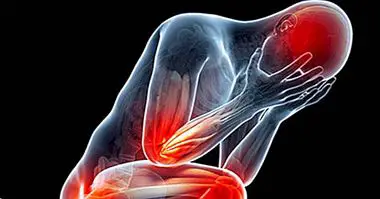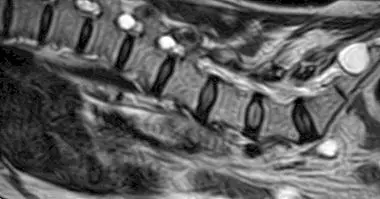The 26 types of suicide (according to different criteria)
Death: the end of life and everything we know , the moment in which we stop being who and how we are. Most people do not want to die, resulting in the idea of death somewhat aversive. However, many see in it a release or way of escape to suffering, or a means to achieve certain ends. Some of these people may decide to end their own lives due to different reasons.
But not all suicides are produced in the same way or have the same characteristics or purposes. That is why we can establish the existence of different types of suicide, classified according to different criteria .
- Related article: "This is how the suicide thinks about death"
The idea of committing suicide
Suicide means any act or omission of this voluntarily performed with the purpose of ceasing to exist, that is, to take his own life . Generally, the person who decides to commit suicide tends to be going through a period of deep suffering in different vital aspects of their life, without being able to face it and being in a state of despair in which the only way out that they can see is death.
The experience of a deep trauma, the diagnosis of an incurable disease, the harassment of other people or the desperation and feeling of total absence of control over one's life are some of the multiple aspects that can precipitate in some people the attempt to kill themselves. Although this type of acts seeks death, most of the people who carry them out do not seek death itself the liberation and the cessation of suffering that something causes them .
At an organic level, suicidal behavior is usually related to a low level of serotonin in the nervous system . There are important risk factors such as the presence of psychopathology (bipolar disorder, followed by addictions, depression, schizophrenia and borderline personality disorder are some of the most linked to suicide attempts), sex (although ideation is more frequent in women, men tend to carry out the suicidal act in a greater proportion of cases) and age, impulsivity and despair, the presence or knowledge of other suicides in the near environment or the existence of Persistent stressors that can not be confronted due to the lack of sufficient resources.
In addition, there are different types of suicide, classified according to different criteria. Next we will see some of the main ones.
- Maybe you're interested: "Suicidal thoughts: causes, symptoms and therapy"
Types of suicide according to motivation
One of the main aspects to consider when evaluating a suicidal act is the motive that has impelled the person to cause his own death. In this aspect we can find a large number of types of suicide, some of the main ones being the following.
1. Suicide call for attention or cry for help
Some people resort to attempted suicide as a mechanism to draw attention to a specific event or ask for help in the face of facts that are not able to control . It can have manipulative purposes and the decease itself does not usually want unless the problem situation does not change.
2. For the purpose of death
The goal of this type of suicide is to achieve one's own death. It is usually planned carefully and meticulously .
3. As a flight
Most suicides have as their real objective the cessation of suffering and not death itself. Death is seen as the only alternative to suffering caused by a specific element of reality (for example, harassment or debt), which is why the subject decides to dispose of his own life. Usually it happens impulsively and without great previous planning .
4. Finalist
This type of suicide is usually aimed at achieving a specific objective other than death or flight. He tends not to seek his own death but to pretend or pretend that search in order to get some kind of benefit. Examples of this are the aforementioned help cry or revenge, although it can also pursue economic benefits such as the fact that others get life insurance.
5. For revenge
Suicide for revenge or of paranoid type It is a type of suicide which is carried out for the purpose of causing harm to other people, in order to make someone feel guilty and / or suffering.
- Related article: "Paranoid Personality Disorder: frequent symptomatology"
6. Of balance
It is considered as such the suicide carried out by people who, in the absence of psychopathology and after a prolonged period of time trying to face a conflictive and painful situation, decide after making a balance that continue living does not mean any kind of gain neither for themselves nor for the environment. It is usually observed in cases of elderly people and people with serious limitations.
Types of suicide according to the modality or method
People who choose to kill themselves resort to different means to do this according to the concrete intentionality of their action, their need to have control of the situation, the level of suffering they want to suffer or simply the availability of concrete means. If suicides and suicide attempts are classified by the method used for this, we can find different types.
7. Soft
These are forms of suicide that in principle do not cause obvious traumas and that tend to cause numbness and little pain . One of the main forms of suicide with soft methods is the ingestion of massive quantities of drugs, such as barbiturates. The person usually has a more passive role in his own death, waiting for the effects of his action.
Likewise suppose a greater likelihood of repentance and salvation , and in many cases the effects can be reversed before they cause the death.
8. Hard
Within this classification are incorporated methods that imply greater brutality , such as suicide through the use of weapons (be they white or fire), electrocuted, thrown into the void or hanging. They tend to suppose a greater probability of death than the soft ones and to cover certain brutality.
Compared to the soft forms of suicide, they are much more likely to cause some kind of suffering. They are also usually methods that involve a direct action of the individual at the time of causing his own death.
9. Strange
This type of suicide usually causes a high level of suffering before producing death, covering a certain cruelty towards oneself. They are usually carried out in situations of psychopathology , especially psychotic. Examples of this would be the intake of corrosive or cutting substances, self-drowning or self-canning practices.
10. Masked
It is about deaths that are provoked by the person himself in such a way that they can be confused with natural deaths or with homicides. They usually pursue a specific intentionality, such as the collection of life insurance by relatives or accuse someone of their own death.
According to the level of regulation and social integration
One of the classifications made after several studies is the one carried out by Durkheim, who considered suicide an act caused fundamentally by social elements . In this sense there are four possible classifications, related to the level of integration of the individual in society or the regulation of this over the life of the people.
11. Selfish suicide
It is understood as such to the type of suicide that takes place when the individual's social connections are weak and the individual does not feel integrated into society. He is not able to feel satisfied due to the lack of realization as a social being . He feels overwhelmed, incapable and alone.
12. Altruistic
It is the self-inflicted death that is produced by an excess of group integration, seeing death itself as a sacrifice made for the benefit of the group. The group is valued more than the individual .
13. Anomic
Anomic suicide is the suicide carried out by people who have insufficient social regulation. The changing and unstable society means that there are no referents, modifying the values of the individual and being able to cause a loss of identity .
14. Fatalist
Unlike the previous one, fatalistic suicide is seen as one carried out by individuals subjected to excessive social control and regulation, feeling oppression and helplessness that can lead to seek death as escape from such a situation.
According to the presence of previous planning
Autolysis can also be classified according to whether it has been previously planned or not.
15. Accidental suicide
It is the type of suicide that occurs by accident. The subject did not really want to die, but his performance generates a situation that ends his life.
16. Reflective, intentional or premeditated
Premeditated suicide is one in which the person who carries it out has planned in advance both the manner and the time and place of his death. In some cases where the motive is the experience of traumatic events or in which the subject manifested great anxiety can be observed a sudden state of calm and serenity prior to the act, the result of having made the decision.
17. Impulsive suicide
Impulsive suicide is one that takes place without prior premeditation. The subject may have thought about taking his own life previously, but does not carry out this action until a time when he feels highly activated and desperate . It can occur in situations of high anxiety, during a psychotic outbreak or during a manic episode.
According to the result
Trying to take your own life can end up generating different results, depending on whether the attempt is successful or not.
18. Non-suicidal self-aggression
In this case we are not facing a real suicide attempt. The subject self-injures for different reasons but without that action supposes a real risk for his life or without that the self-harm pretends this fact. Sometimes it can cause death.
19. Attempt / Suicide attempt
An attempt or attempt to commit suicide is considered to be any act voluntarily carried out with the intention of achieving one's own death without such action succeeding in its objective.
20. Completed suicide
We call consummate suicide the one in which the person has acted in order to kill himself and has achieved its goal .
21. Frustrated suicide
This is the type of attempted suicide that has been carried out for the purpose of achieving death, using methods that as a general rule cause the death of the individual. However, the intervention of circumstantial and unpredictable elements, such as the appearance of other people, the rapid performance of medical services, poor planning or an inaccurate use of the means chosen to kill have prevented it from ending causing death .
According to the involvement of other people
Sometimes suicide involves, either voluntarily or involuntarily, more than one person. In this sense we can find the following types of suicide.
22. Collective or mass suicide
It is a type of suicide in which more than one person or a whole group chooses and pacts voluntarily to propitiate their own death. The reasons for this can be several, such as the flight of a frightening factor or the conviction that such an act can bring some kind of benefit. This type of acts they usually occur in contexts of war situations or in sects .
23. Expanded
Expanded suicide is based on the idea that an individual decides to take his own life but, in addition, considers necessary or even compassionate death of others generally linked to him. These other people they have not expressed the intention of wanting to die .
The individual first kills others, who are usually close relatives such as children, partners or family, and subsequently take their own lives. This type of situation usually occurs in familiar environments in which the person who wants to commit suicide considers that those who leave behind will suffer greatly or will not be able to survive without it.
24. Assisted suicide or euthanasia
The euthanasia or assisted suicide supposes the end of the life of a person by means of the participation of another or others, authorized participation and demanded by the subject himself or by his immediate environment in the case of irreversible injuries that do not allow a decision on the part of the individual.
25. Induced suicide
It is an act of self-harm for the purpose of death that has been provoked or facilitated due to coercion or suggestion that other people have provoked the individual who commits suicide. The subject can be threatened or forced to die, or it can be actively facilitated that he wants to die.
26. False suicide
In this case we are not facing a true case of suicide. It is generally a homicide or murder that has been carried out in such a way that it seems that the subject in question has taken his own life .
Bibliographic references:
- Capponi, R. (2000). Psychopathology and Psychiatric Semiology. Edt. University: Santiago.
- Durkheim, E. (2005). Suicide: A study in Sociology (2nd ed). Taylor and Francis Hoboken.



















